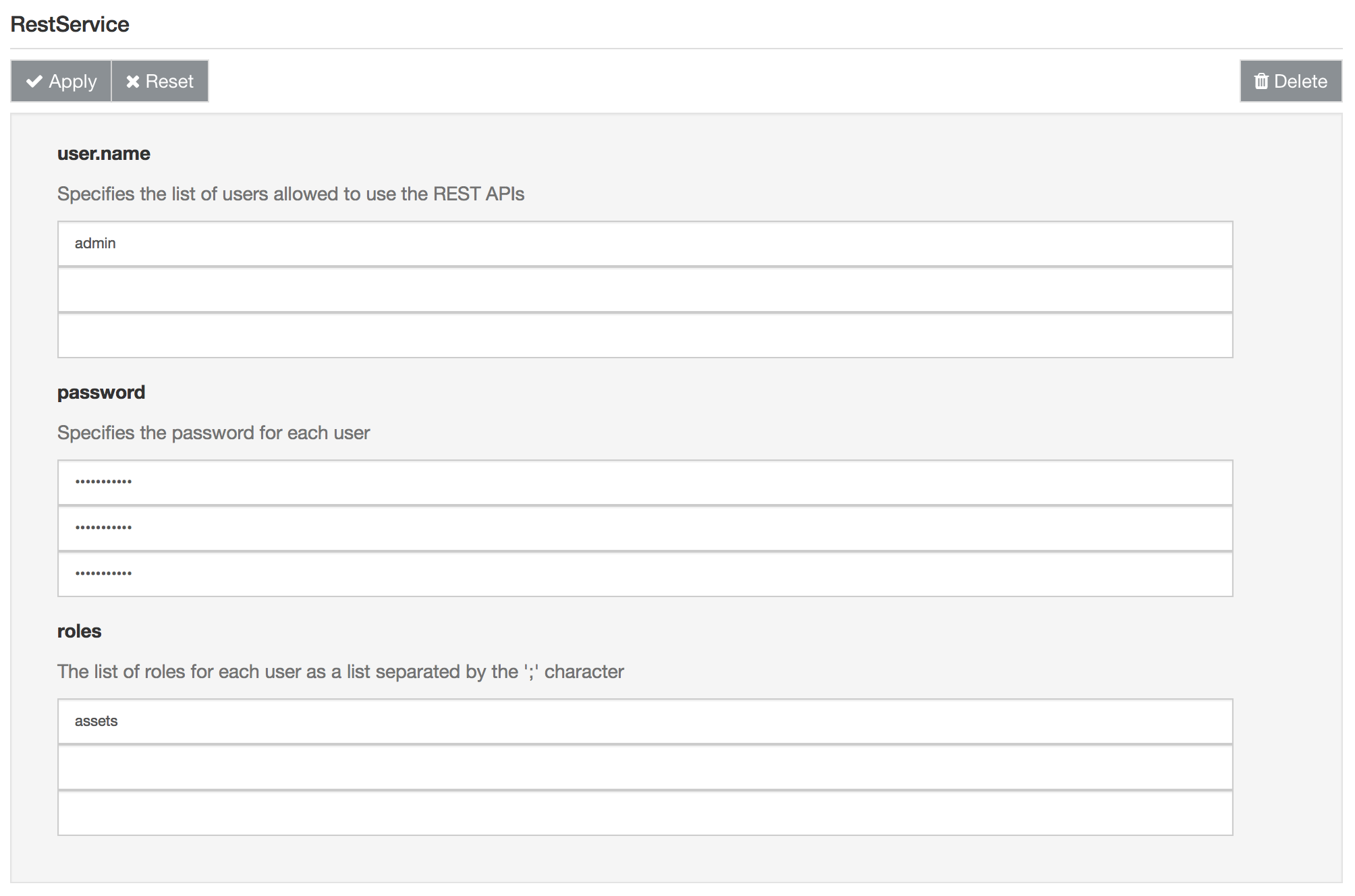Rest Service
ESF provides a built-in REST Service based on the osgi-jax-rs-connector project.
By default, REST service providers register their services using the context path /services.
The REST service provides the BASIC Authentication support. The allowed users and associated roles can be specified via the REST Service configuration as depicted in the image below:

The System Administrator is required to specify:
- user.name - Specifies the list of users allowed to use the REST APIs
- password - Specifies the password for each user
- roles - The list of roles for each user as a list separated by the ';' character
of the users allowed to interact with the REST APIs provided by this ESF bundle.
By default, ESF comes pre-configured with the following credentials:
- user.name - admin
- password - admin
- roles - assets
Assets REST APIs
ESF exposes REST APIs for the Asset instances instantiated in the framework.
Assets REST APIs are available in the context path /services/assets.
Following, the supported REST endpoints:
Method | Path | Roles Allowed | Encoding | Request Parameters | Description |
|---|---|---|---|---|---|
GET | / | assets | JSON | None | Returns the list of available assets. |
GET | /{pid} | assets | JSON | None | Returns the list of available channels for the selected asset (specified by the corresponding PID) |
GET | /{pid}/_read | assets | JSON | None | Returns the read for all the READ channels in the selected Asset |
POST | /{pid}/_read | assets | JSON | The list of channels where the READ operation should be performed. | Returns the result of the read operation for the specified channels. |
POST | /{pid}/_write | assets | JSON | The list of channels and associated values that will be used for the WRITE operation. The expected format is: | Performs the write operation for the specified channels returning the result of the operation. |
Please refer to this page for an example on how to use Assets REST APIs
Updated 2 months ago
